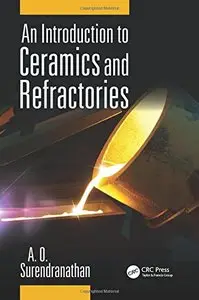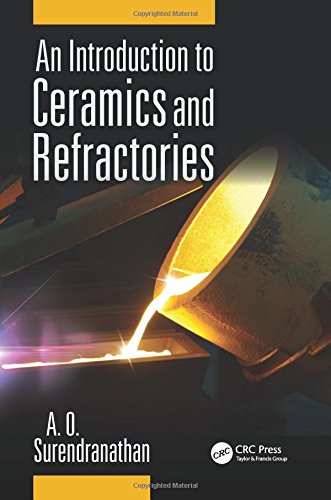An Introduction to Ceramics and Refractories by A. O. Surendranathan
2014 | ISBN: 148222044X | English | 524 pages | PDF | 5 MB
2014 | ISBN: 148222044X | English | 524 pages | PDF | 5 MB
All Refractories Are Ceramics but Not All Ceramics Are Refractories
Ceramics and refractories cover a wide range of fields and applications, and their relevance can be traced as far back as 24,000 BC to the first man-made piece of earthenware, and as recently as the late 1900s when ceramics and ceramic matrix composites were developed to withstand ultra-high temperatures. Beginning with a detailed history of ceramics, An Introduction to Ceramics and Refractories examines every aspect of ceramics and refractories, and explores the connection between them. The book establishes refractories as a class of ceramics with high fusion points, introduces the fundamentals of refractories and ceramics, and also addresses several applications for each.
Understand Ceramic Properties and Refractory Behavior
The book details applications for natural and synthetic ceramics, as well as traditional and engineering applications. It focuses on the various thermal and thermo-mechanical properties of ceramics, classifies refractories, describes the principles of thermodynamics as applied to refractories, and highlights new developments and applications in the ceramic and refractory fields. It also presents end-of-chapter problems and a relevant case study.
Divided into three sections, this text:
Introduces and details the applications of ceramics and refractories
Discusses the selection of materials and the two stages in selection
Describes the phase equilibriums in ceramic and refractory systems
Outlines the three important systems: unary, binary, and ternary
Considers corrosion of ceramics and refractories, failures in ceramics and refractories, and the design aspects
Addresses bonding, structures of ceramics, defects in ceramics, and ceramics’ microstructures
Covers the production of ceramic powders starting from the raw materials
Explains four forming methods
Highlights three types of thermal treatments
Defines mechanical properties, and thermal and thermo-mechanical properties
Classifies materials and designates classes
Addressing topics that include corrosion, applications, thermal properties, and types of refractories, An Introduction to Ceramics and Refractories provides you with a basic knowledge of the fundamentals of refractories and ceramics, and presents a clear connection between refractory behavior and ceramic properties to the practicing engineer.



